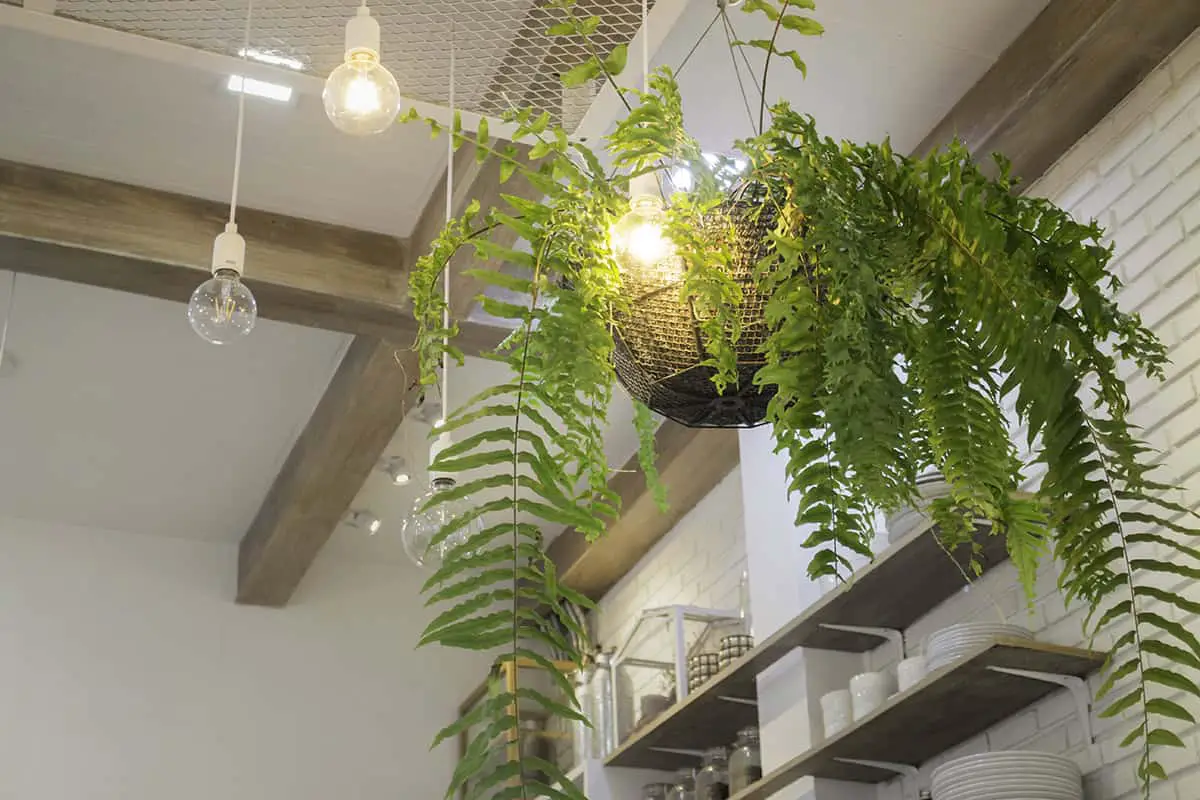You’ve just moved into a rental apartment and want to bring some greenery into your space, but drilling holes in the ceiling is not an option. Fortunately, there are several creative and damage-free methods to hang your plants. Here, you’ll discover practical and renter-friendly ways to hang plants from the ceiling without drilling.
Table of Contents
- High Shelves For Ceiling-Level Plant Display
- Clip-On Hooks For Ceiling Grids
- Expandable Ceiling Poles For Plant Hanging
- Plant Swings From Existing Fixtures
- Macrame Hangers On Window Tracks
- Command Strips For Lightweight Plants
- Decorative Ladders As Plant Hangers
- Hanging Bars Between Walls
- Over-The-Door Hangers
- Wire Grid Panels For Ceiling Plant Hanging
- Bookcase Toppers For Elevated Plant Display
- Rope Or Chain From Wall Brackets
- Floating Frames For Wall-Mounted Plant Hanging
High Shelves For Ceiling-Level Plant Display
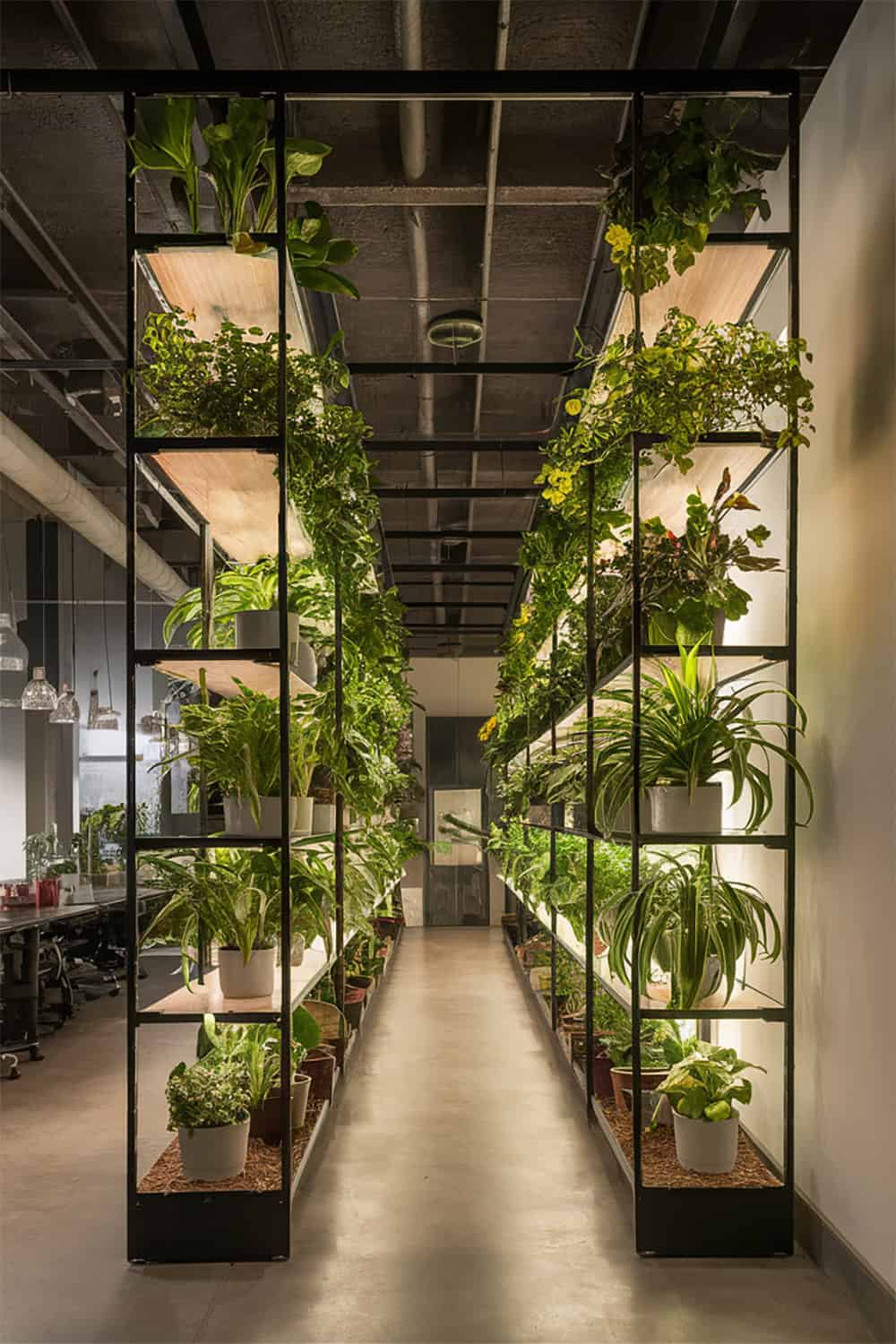
Hanging plants on ceilings adds a vibrant touch to your home, but not everyone can or wants to drill into the ceiling. It’s a common challenge, especially for renters or those looking to avoid permanent changes. You may wonder how to suspend your greenery without leaving holes or marks.
High shelves offer a smart solution for displaying plants near the ceiling without the need for drilling. They allow you to elevate your greenery, taking advantage of vertical space. If your goal is to create a lush look overhead, this option is for you.
Install these shelves by using tension rods positioned between the floor and the ceiling. The rods anchor firmly without damage. Next, place your plants on the shelves. Ensure stability and even weight distribution to prevent accidents.
Choose adjustable units to customize the height. Solid shelves are ideal as they hold soil and water effectively. You can find these shelves in materials like plastic, which offer affordability and ease of maintenance.
Clip-On Hooks For Ceiling Grids

Clip-on hooks for ceiling grids enable you to hang plants without using a drill. These hooks attach to the metal grid silently found in many suspended ceilings. You clip them onto the frame, a method both secure and simple. They’re ideal for office spaces or homes with drop ceilings.
Installing these hooks is easy. You need no tools to quickly transform your ceiling into a garden oasis. Your plants hang freely, adding greenery to your decor. Remember to check the weight limit to ensure the safety of both your plants and ceiling grids.
These hooks are not only practical but also often quite discreet. They blend seamlessly, highlighting your hanging plants. The focus remains on the beauty of your greenery, not on the hardware.
With clip-on hooks, you can rearrange your plants as desired. Move them around until you find the perfect spot. Your ceiling can hold various plants if the grid supports the weight. Enjoy a living, ever-changing ceiling landscape thanks to these nifty hooks.
Expandable Ceiling Poles For Plant Hanging
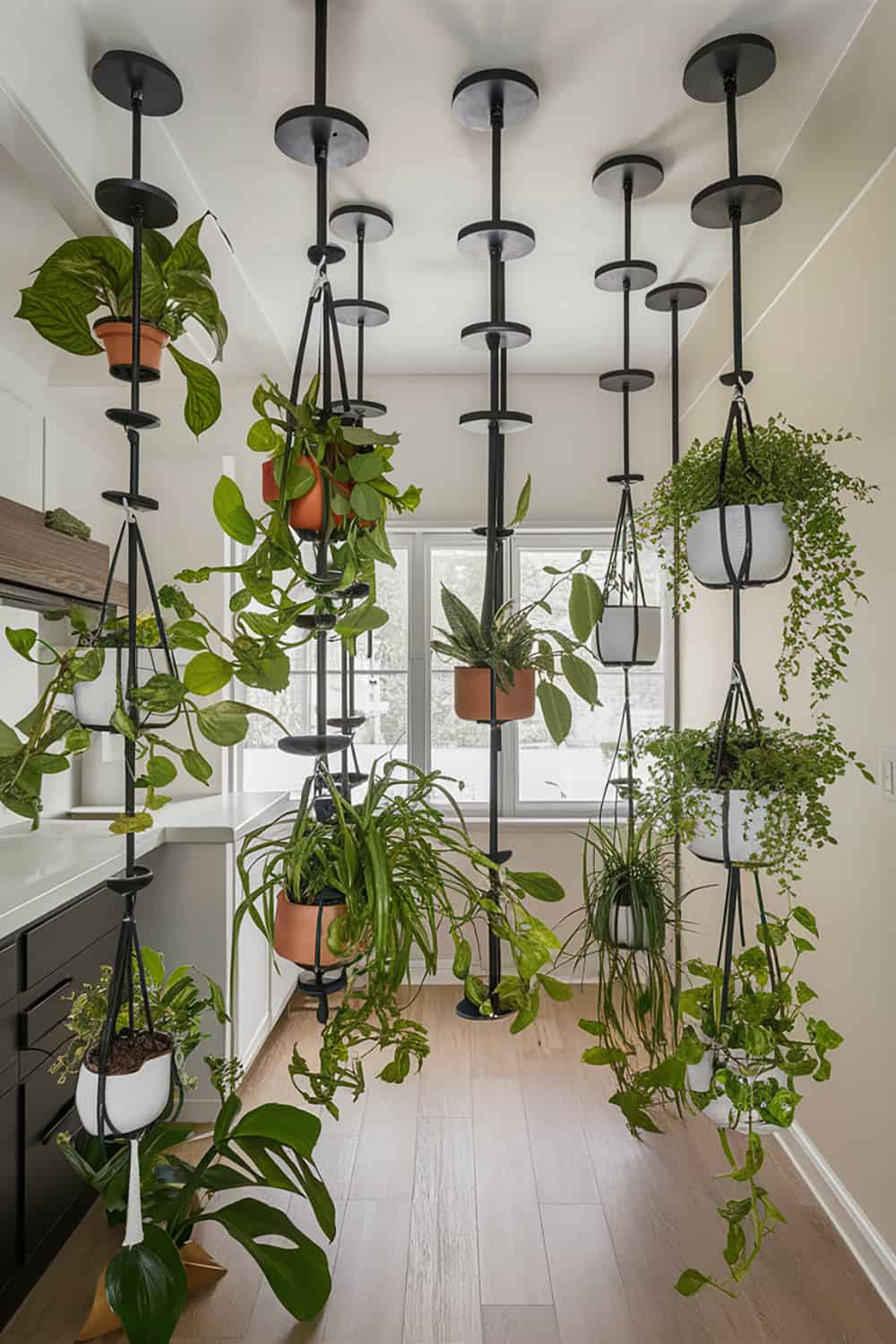
Expandable ceiling poles make hanging plants easy. You can install them without damaging your ceiling since they don’t require drilling. These poles adjust to fit the height of your room. Once in place, they stay secure through tension.
You’ll find expandable poles in various materials. Some are metal, others made of durable plastic. Metal poles may support heavier plants. Choose one that matches your room’s decor.
These poles often come with hooks or rings. You can hang your plants directly or use hanging baskets. Ensure your plant’s pot has a secure base. It will prevent tipping and soil spillage.
Installation is straightforward. Extend the pole until it’s snug between the floor and ceiling. Check the tension regularly to ensure it hasn’t loosened. If it has, readjust to maintain stability.
Plant Swings From Existing Fixtures

Hanging plants from existing fixtures is a smart move. You avoid drilling and keep your ceiling intact. Look for sturdy fixtures in your home, like ceiling beams or solid window frames. Make sure they can support the weight of your plants.
First, select a robust plant hanger. Opt for a design that complements your room. Ensure the hanger’s hook is wide enough to grip the fixture securely. You want your plant to hang safely.
Next, check the fixture’s condition. It must be strongly attached to the ceiling or wall. If it moves or feels weak, choose another spot. Your plant’s safety depends on this.
Finally, attach the hanger to the fixture. Place the plant inside and adjust the height if necessary. Now you can enjoy your hanging garden with peace of mind.
Macrame Hangers On Window Tracks
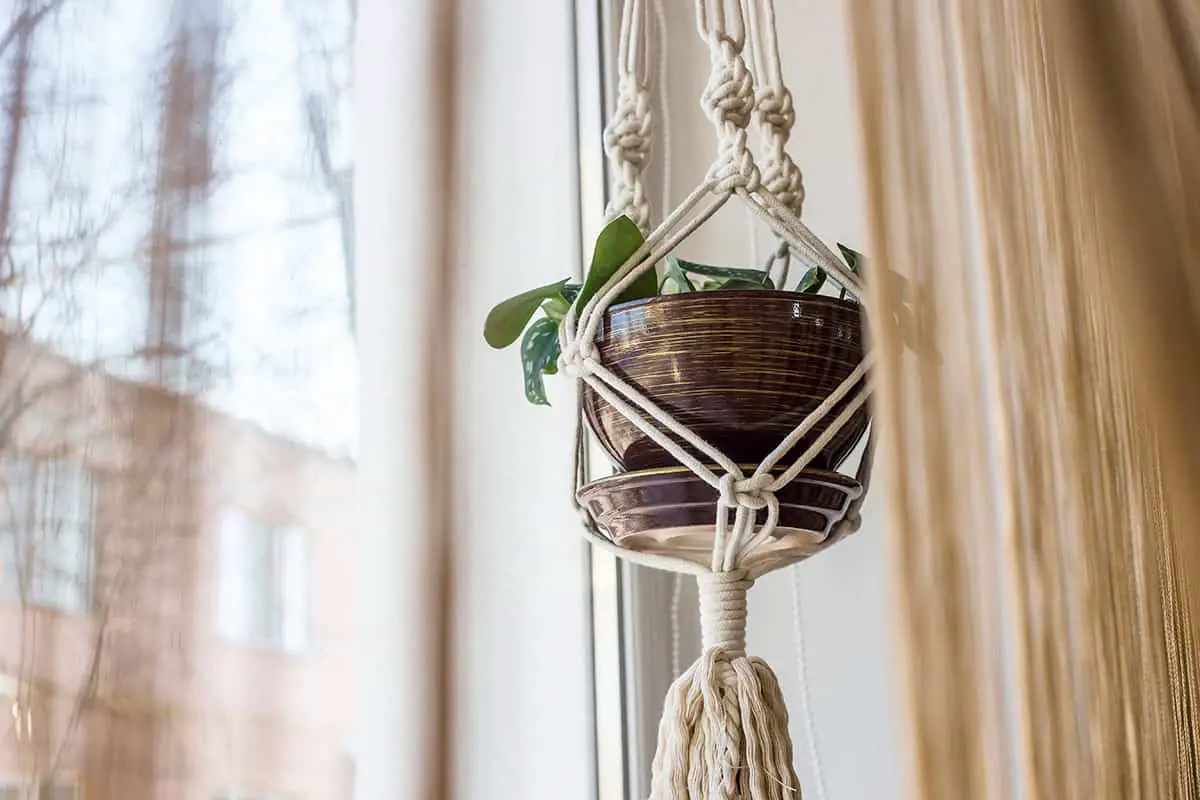
Macrame hangers offer a stylish way to display your plants near windows. You can use window tracks to hang plants without drilling. First, ensure your macrame hanger fits the window area. Measure the width of your window track to select a suitable hanger.
Next, choose a strong, adjustable tension rod that can fit securely within the track. Slide your rod into place and twist to extend it against the window frame sides. This method ensures stability without damaging the surface.
Now, hang your macrame hanger from the tension rod. Ensure the plant’s weight is well within the rod’s carrying capacity. This approach allows flexibility. You can rearrange or remove the hangers easily.
For added security, use S-hooks or carabiners to attach the macrame hanger to the rod. Ensure the hooks are the right size to move smoothly on the rod without slipping off. Your macrame hangers on window tracks are now ready to showcase your plants.
Command Strips For Lightweight Plants
Command strips offer a secure solution for hanging lightweight plants. You can easily apply them to your ceiling without drilling. First, choose a flat area on the ceiling. Ensure it’s clean and dry to help the adhesive bond properly. Mounting is straightforward—simply press the strip onto the surface for about 30 seconds.
For optimal hold, wait an hour before suspending your plant. This waiting period gives the adhesive ample time to set. Remember to check the weight limit on the command strip packaging. Your plant and container should be lighter than this limit. This method is ideal for small, decorative plants that add a touch of greenery without the need for heavy-duty hardware.
When it’s time to remove or adjust the placement of your plants, command strips come off cleanly. You won’t have to worry about damage to your ceiling. This makes them a favorable option for renters or anyone looking to avoid permanent alterations to their living space.
Decorative Ladders As Plant Hangers

Decorative ladders transform swiftly into chic and functional plant hangers. Their rungs offer various levels for hanging your plants, enabling a dynamic display. Opt for a wooden ladder for a warm, rustic feel, or a metal one for a sleek, modern vibe.
To start, position your ladder against a stable wall or let it lean at an angle. Ensure your ladder’s stability to safeguard your plants. For each plant, select a pot with an integrated hanging mechanism or add a hook to your pot.
Hang plants on the ladder’s rungs, spacing them to allow each plant enough light and air. Smaller plants fit well on the higher rungs, with larger ones closer to the base. Rotate your plants regularly to expose them to even lighting.
Your decorative ladder offers a vertical garden space without drilling into your ceiling. It’s an ideal solution if you’re renting or prefer not to alter your home permanently. Enjoy your greenery’s elevated view with this clever technique.
Hanging Bars Between Walls
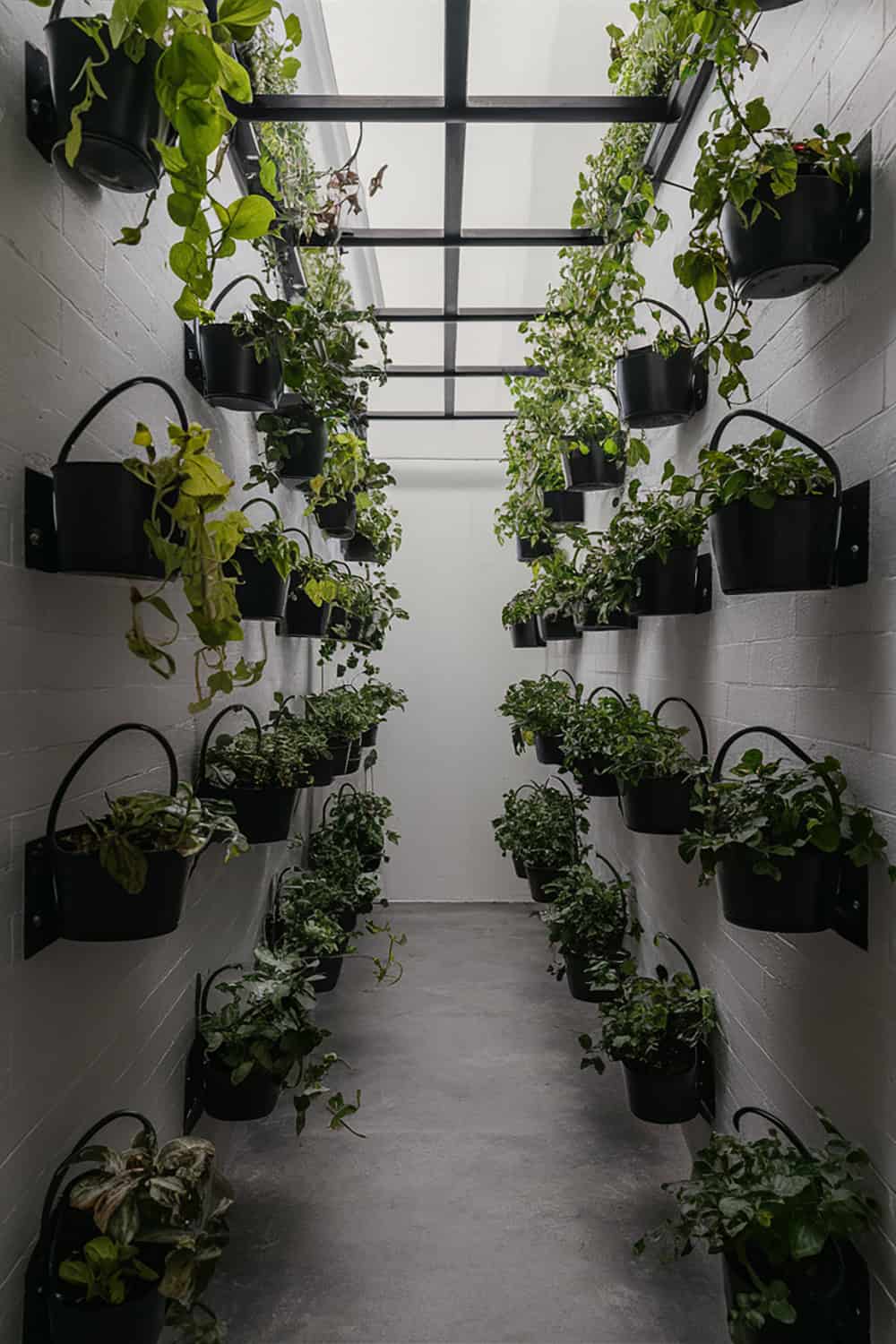
When you want to suspend plants, consider using hanging bars between walls. This solution involves a bar or rod extended across a space. You need two opposite and stable surfaces. Place the bar on these to make a solid base for your plants.
Your plants will hang securely from the bar. You can attach hooks or strings to the bar. Place your plants on these. This way, they’re off the ground and add greenery to your room.
Choose a bar that suits your room’s width. It must be sturdy enough to support your plants’ weight. Metal or wooden dowels make good choices. Ensure it fits tightly between the walls. This prevents it from falling.
Over-The-Door Hangers
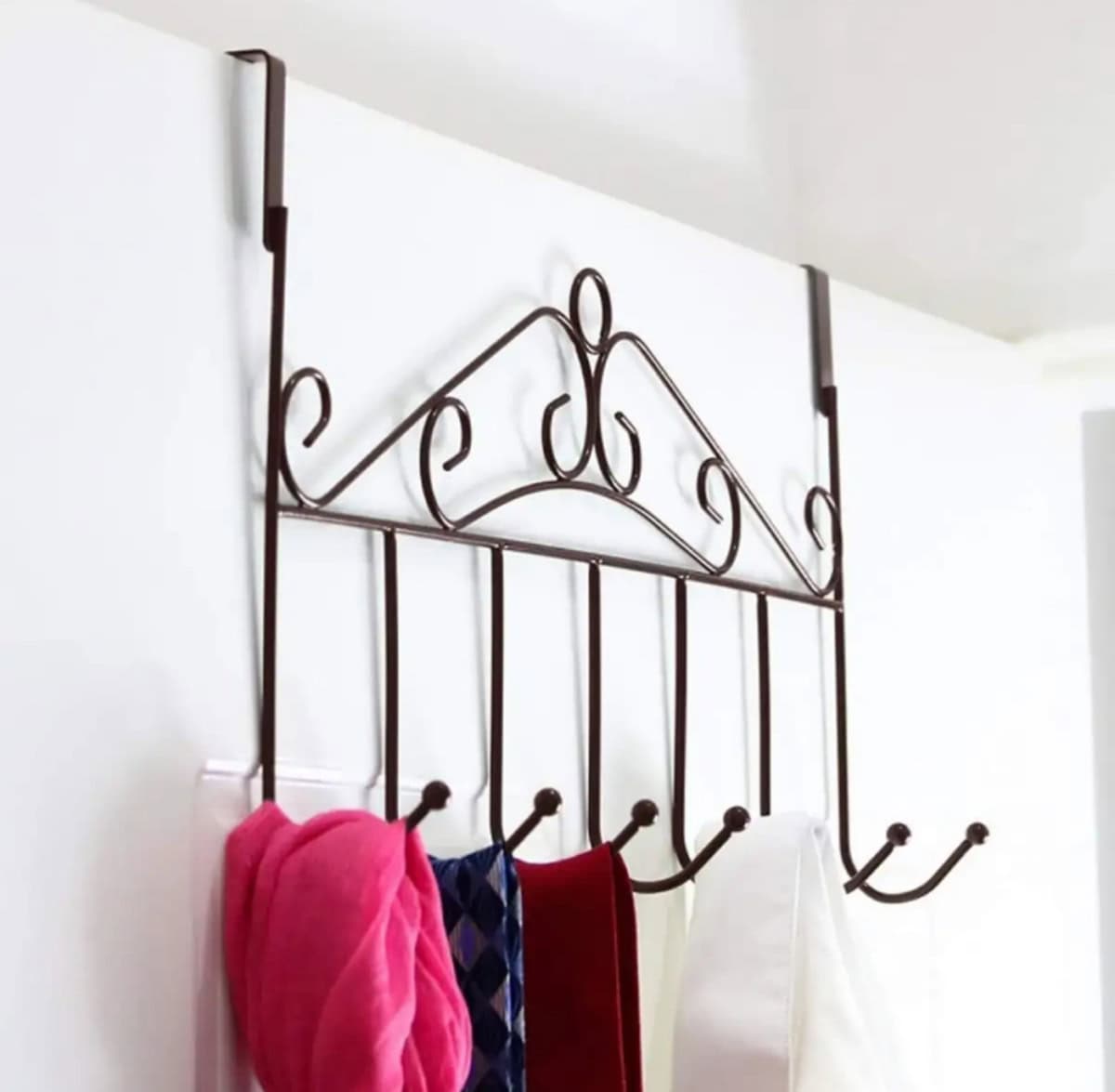
When you need to hang plants from the ceiling with no drills, over-the-door hangers are an excellent choice. You can hang your plants off doors instead of drilling holes in the ceiling. This method relies on sturdy metal brackets that slip over the top of any door.
Choose an over-the-door hanger designed for durability and sufficient weight capacity. You want to ensure your plant remains securely in place. These hangers come in various styles and finishes. You can match them with your home decor. Remember, the door will need to stay open, so consider the ideal plant size for this method.
For best use, select doors that receive ample ambient light. This placement will help your plants thrive. An over-the-door hanger allows for easy installation and removal. That makes it perfect for renters or anyone who prefers not to leave permanent marks.
This option offers a quick setup. Simply unbox the hanger, fit it snugly over your door, and hang your plant.
Wire Grid Panels For Ceiling Plant Hanging
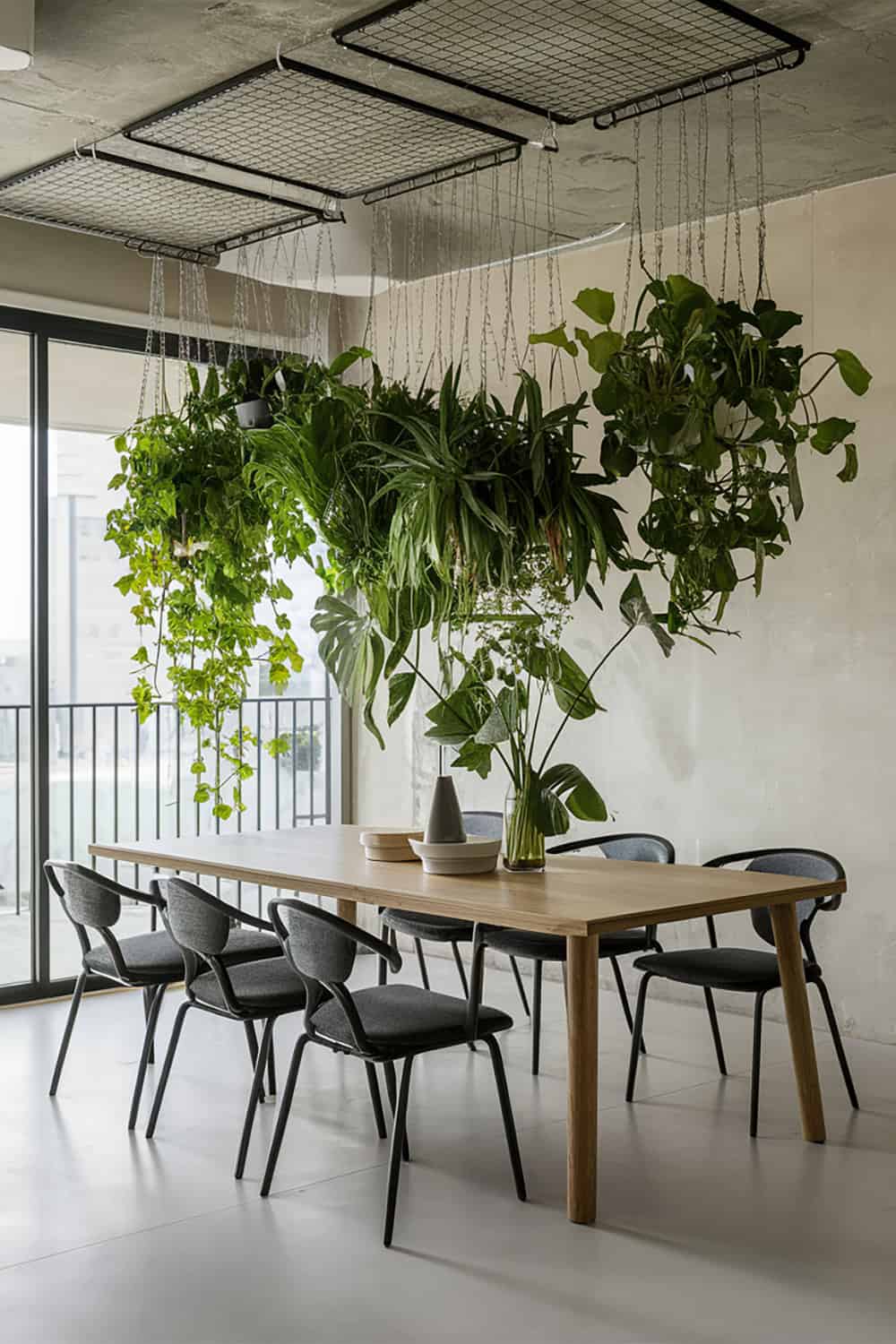
Wire grid panels are a clever solution for hanging plants from the ceiling without drilling. These panels offer a sturdy grid structure that you can attach to the ceiling using adhesive hooks or strips. The strength and flexibility of wire grid panels make them suitable for hanging a variety of planters, with the added advantage of not causing permanent changes or damage to your ceiling.
To install wire grid panels, first, clean your ceiling surface thoroughly. This ensures the adhesive hooks adhere properly. Next, attach the hooks at strategic points; the corners of the grid panel are a good start. After securing the hooks, carefully place the grid panel onto the hooks, checking for stability.
For plant hanging, you need S-hooks or similar attachments that can latch onto the grid. Your plants go onto these hooks, allowing for an aesthetically pleasing plant display. Remember to consider the weight of your plants so that you use a sufficient number of hooks for support. This method not only preserves your ceiling but can also be rearranged with ease.
By choosing wire grid panels, you create a versatile and temporary way to display plants. This method is sure to enhance any space without the need for drilling or permanent alterations.
Bookcase Toppers For Elevated Plant Display
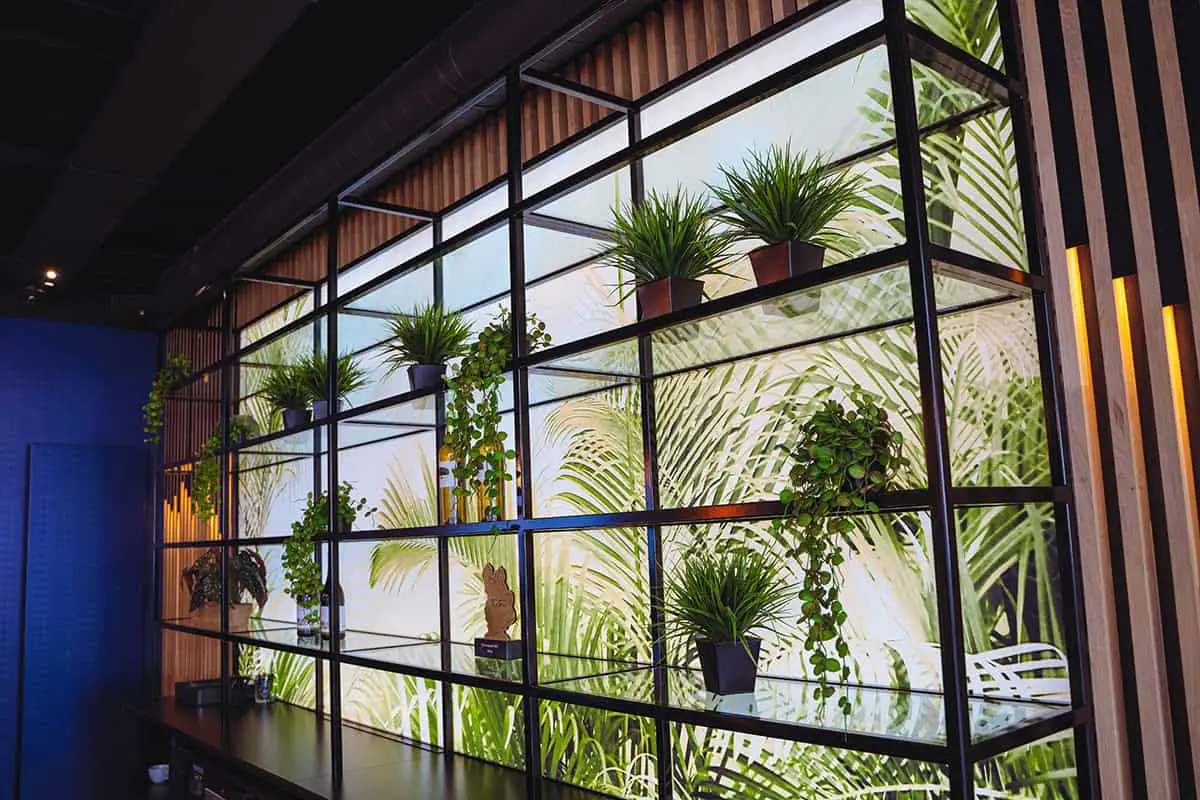
Transform the top of your bookcase into a vibrant garden spot. This method saves floor space and keeps your plants within view. First, ensure your bookcase is sturdy. Choose lightweight pots and planters to avoid added strain. For optimal sunlight, position your bookcase near a window.
Consider placing waterproof saucers beneath pots. This protects your bookcase from water damage. Mix and match plant heights for visual appeal. Trailing plants add a dynamic touch as they cascade down the sides.
Rope Or Chain From Wall Brackets
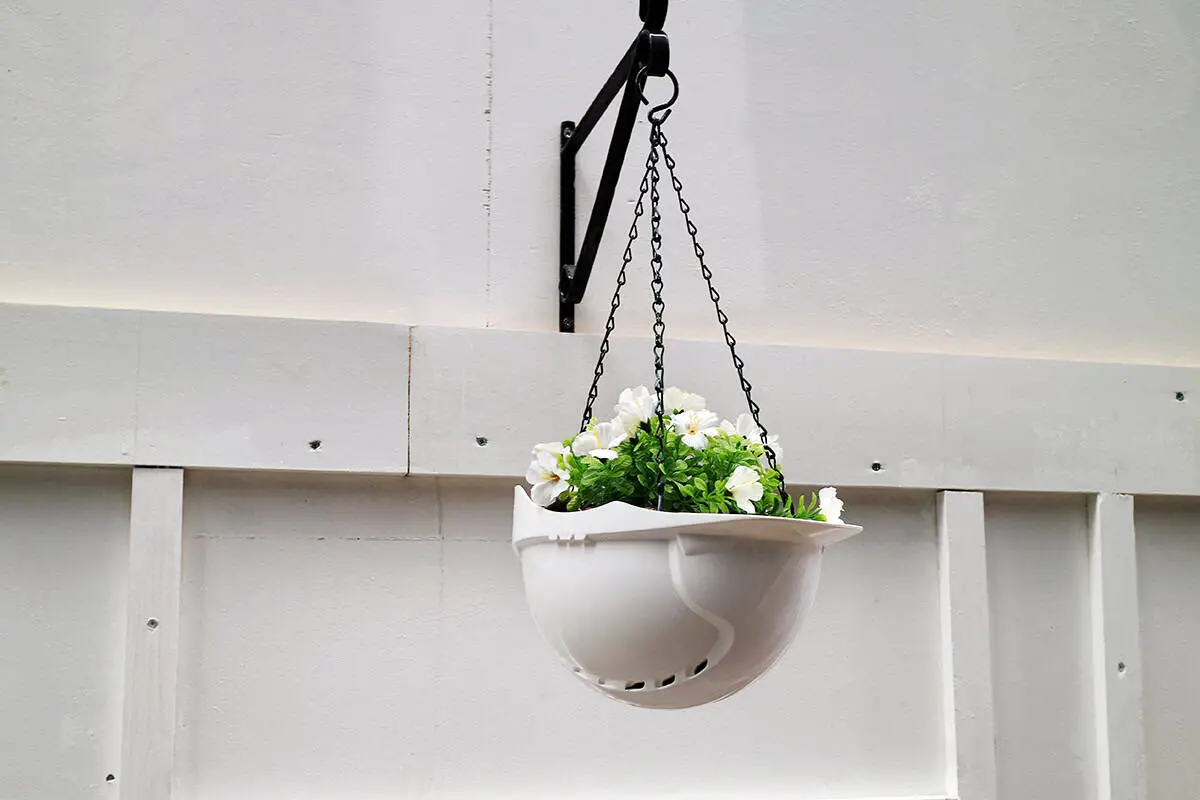
Hanging plants from your ceiling without drilling is easy with wall brackets. Choose brackets that fit your space’s style. Attach the brackets securely to your walls. Make sure they can support the weight of your plants.
Using rope or chain, you can create a hanging support. This method works well for both lightweight and heavier plants. Adjust the length to suit the height you prefer.
To start, fasten the rope or chain to the plant holder. Sometimes, holders come with loops for this purpose. If not, you may need to tie the rope firmly around the planter.
Next, drape the other end of the rope or chain over the wall bracket. This forms a simple, sturdy hanging system.
Floating Frames For Wall-Mounted Plant Hanging
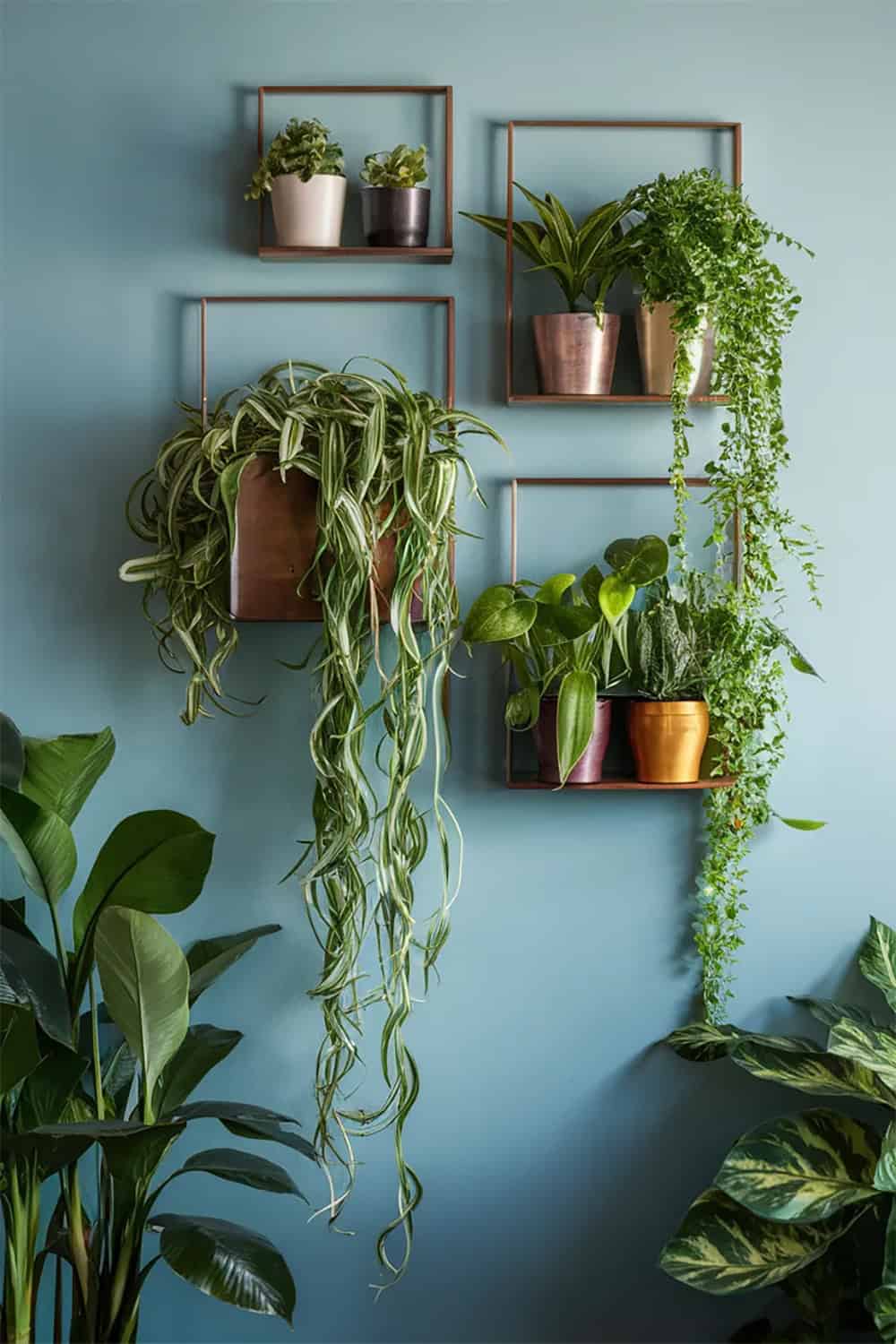
Floating frames offer a creative way for you to hang plants. These frames attach to walls without the need to drill holes. They use strong adhesive strips or hooks. This protects your ceilings from damage.
Choose a frame suited to the weight of your plant. Then, check the adhesive strength of your selected strip or hook. Make sure it can hold the plant’s full weight. Mount the frame on your wall following the manufacturer’s instructions.
Place your plant within the frame securely. Ensure it’s within reach for easy watering. Floating frames allow a clean and modern look. They save ceiling and floor space.
With the right care, these frames will hold your plants safely. Change the adhesive strips as directed to maintain strength. Floating frames are a versatile option for wall-mounted plant hanging.
